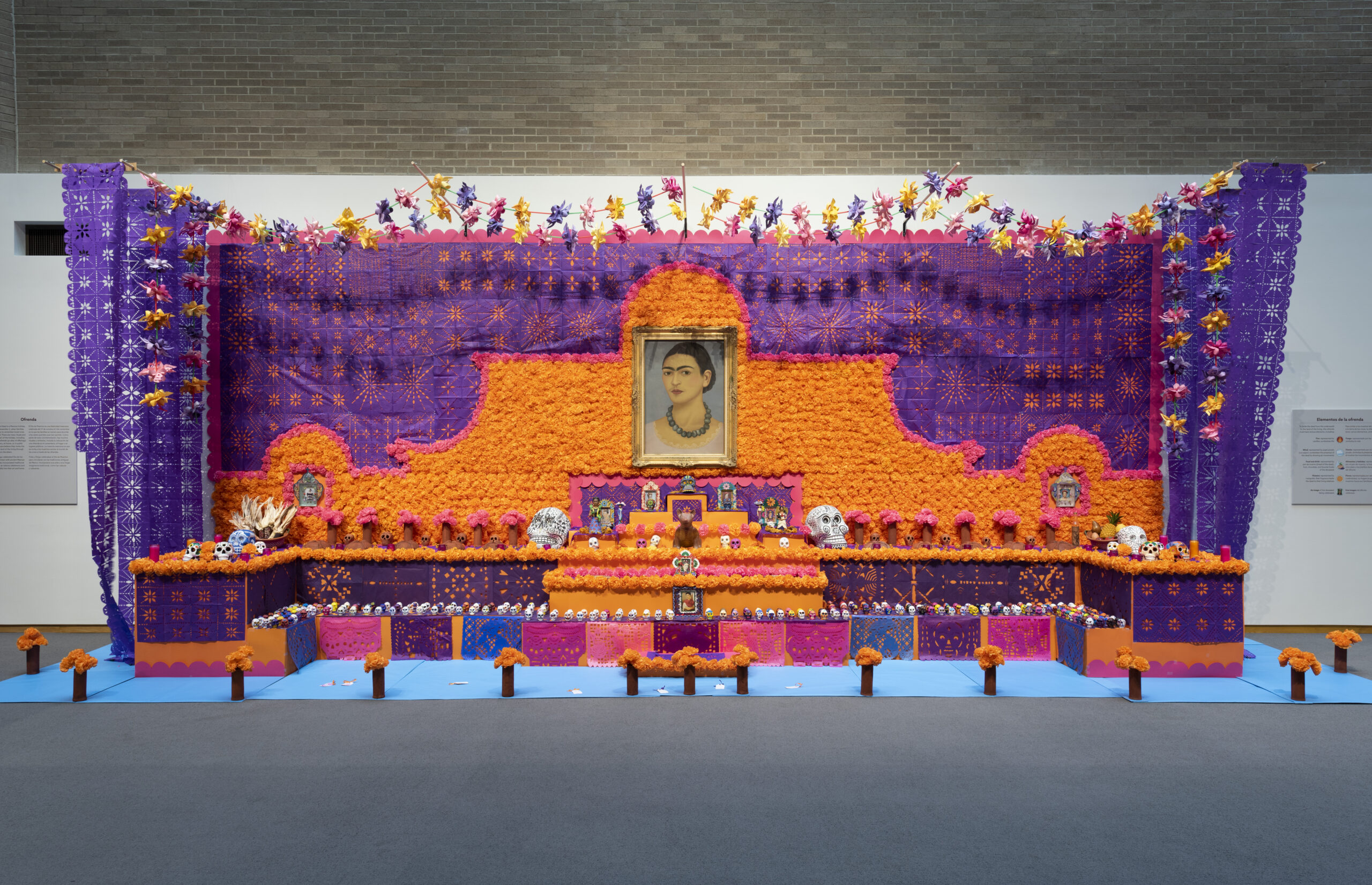Dia de Oakwood- Free screening of Disney’s Coco (event)
Dia de Oakwood is a Raleigh event at Oakwood Cemetery to celebrate Day of the Dead.
view eventBy Michelle Harrell, NCMA Director of Education
Día de Muertos, or Day of the Dead, is a holiday inspired by traditions in ancient Mexico that celebrate life and honor loved ones who have died. The cultural traditions celebrated on Día de Muertos have evolved over time, incorporating Catholic elements introduced by Spanish colonizers. In this resource we explore how museum objects offer clues to learning about ancient cultures and how the tradition is celebrated today.
During the 16th century, Mexico was colonized by the Spanish. Indigenous traditions were blended with Catholic traditions brought by the Spanish: All Saints Day on November 1 and All Souls Day on November 2. In Roman Catholicism, All Saints Day is a feast day celebrating saints who do not have their own feast day. Britannica describes All Souls Day as a day of prayer and remembrance for believers who have died.
“Day of the Dead celebrates life in a different way.”
Monica Collin, Mexican Consulate in Raleigh, Dia de Oakwood Video
Explore a Google Arts and Culture virtual gallery from the Smithsonian National Museum of the American Latino to learn how Day of the Dead is celebrated through altars, folk art, music, and dance.

The ofrenda is an important aspect of the Day of the Dead. Ofrenda means “offering” in Spanish. Ofrendas are altars for those who have died. Ofrendas are made from objects that connect to the lives of those being remembered. The objects symbolize reminders that life is eternal and that the presence of the deceased loved one is everlasting. To invite the dead from the underworld to the land of the living, the ofrenda must include these elements:
Explore a Google Arts and Culture virtual gallery from the Smithsonian’s National Museum of the American Latino. It includes an animated story of a teenager who learns about traditional elements in an ofrenda from her abuelita (grandmother).
Watch a video of Raleigh artist Peter Marin explaining how he created a giant ofrenda installation for the Frida Kahlo, Diego Rivera, and Mexican Modernism exhibition at the NCMA. The ofrenda he created included calaveras (decorative skulls), cempasúchil (paper flowers), papel picado (tissue paper with cut-out designs), a painting of Frida Kahlo by Marin, a ceramic dog, and written blessings and memories.
Participating in the community’s observations of Day of the Dead offers a sensory learning experience of cultural traditions in practice. Día de Oakwood is a Day of the Dead celebration at Oakwood Cemetery in downtown Raleigh. The event began as a collaboration between organizers of the Day of the Dead 5K Angela Salamanca and Natalia Campbell, Oakwood Cemetery director Robin Simonton, and artist Peter Marin.
Watch a video to hear Monica Collin (from the Mexican Consulate in Raleigh) discuss the components of an ofrenda. Collin talks about the photos used in an ofrenda from Michoacán, Mexico, where people go to the cemetery and celebrate with their loved ones. She discusses how cultural traditions like the Catrina doll celebrate life. Collin also describes her wish to help people understand the difference between Halloween and Day of the Dead, in an effort to celebrate the richness of Mexican culture.
Museum objects offer clues to explore traditions shared by ancient cultures. Most of the preserved objects in the Museum’s Ancient American collection came from shaft tombs, or multichambered tombs that were dug underneath buildings.
Explore a Google Arts and Culture resource from the Dolores Olmedo Museum to learn more about the ceramic dogs that have been found in ancient burial sites in Western Mexico. The animal most frequently depicted in Colima art is the Mexican hairless dog, known as Xoloitzcuintli (pronounced show-low-eats-queen-tlee) by the Aztecs of the 15th century. In West Mexico, where the NCMA’s Dog Effigy was found, mourners placed ceramic dogs in tombs to serve as spirit guides and companions for the dead.
Watch a video of Ángel Gonzalez, curator of the NCMA’s Ancient American collection, explaining why Mesoamerican societies placed dogs in tombs. It was believed that the journey to the underworld included dangerous trials, and a guide dog was necessary in helping the deceased person safely reach the other side.
Dia de Oakwood is a Raleigh event at Oakwood Cemetery to celebrate Day of the Dead.
view eventDia de Oakwood is a Raleigh event at Oakwood Cemetery to celebrate Day of the Dead.
view eventDia de Oakwood is a Raleigh event at Oakwood Cemetery to celebrate Day of the Dead.
view event